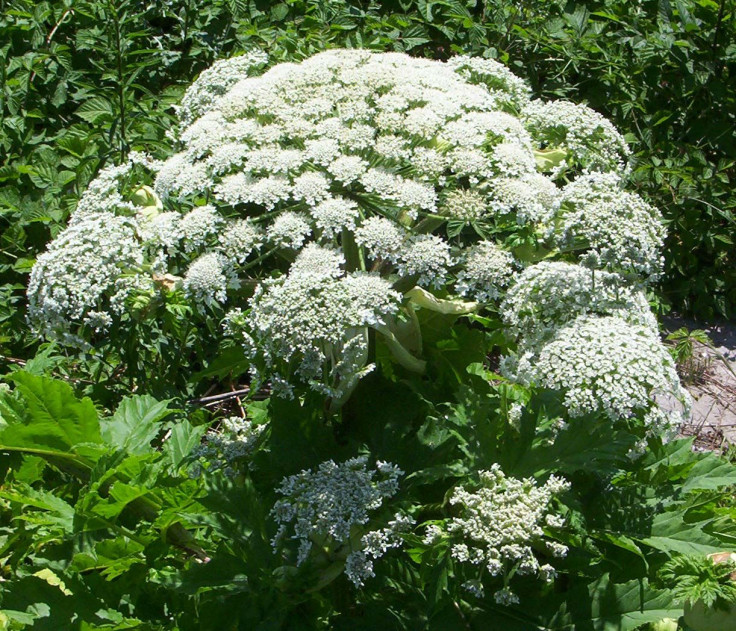Giant Hogweed Spotted In Michigan, Can Cause Severe Burns Or Blindness If Touched

It’s not quite the Day of the Triffids, but it seems that Calhoun County, Mich., is in the midst of a nasty plant infestation that can potentially inflict severe burns and even blindness upon its hapless citizens.
As reported by Michigan affiliate WMMT, there have been reported sightings of Giant Hogweed (Heracleum mantegazzianum) around the area, a beautiful-looking but thoroughly unpleasant plant.
“It’s not deadly, but it can certainly cause you an awful lot of discomfort,” Paul Makoski, Calhoun County’s Environmental Health Director, told WMMT. “If it were to get on your skin, it's photo reactive meaning that in sunlight it starts to burn. You can have fluid little filled vesicles on your skin. Sometimes that can take 24 to 48 hours to develop. But what happens is there's almost that possibility that they can develop into permanent purple of black scars on your skin.”
And if that’s not bad enough, should the toxic sap actually get into your eyes, it could very well cause blindness.
Giant Hogweed, named so because it can grow up to 20 feet tall, is a native citizen of Central Asia, though nowadays it’s especially prominent in the United Kingdom, where more than 1000 sightings of Hogweed colonies have been recorded since 2010. This summer alone, as reported by the Express, six cases of Hogweed contact in the UK have led to severe injuries and hospitalizations.
In the United States, it’s mostly spotted along the northern part of the country, though many states, including Michigan, lack the funding needed to actively track or preemptively remove the invasive plant. In many cases, health departments are forced to rely on eyewitness reports, which often leads to misidentification since Giant Hogweed resembles other plants and is rarely found in isolation.
According to the Michigan Department of Agriculture and Rural Development (MDARD), only two percent of the sightings submitted to them turn out to actually be Giant Hogweed. The MDARD now provides a link to a video on properly identifying Hogweed created by Michigan State University.
Giant Hogweed is also the plant equivalent of a wanted fugitive, having been listed as a Federal Noxious Weed under the Plant Protection Act, which makes it illegal in the U.S. to import, export, or transport it between states without a permit (to kill?).
Should you personally come across Giant Hogweed, after screaming in abject terror, public health experts recommend that you stay a safe distance away and call your local health department.



























